The raspy voices of The Beastie Boys echoed through the gallery space at Suffolk’s New England School of Art and Design to accompany the the loud designs and colors of the University’s latest exhibit, “Wallpower!,” during its closing reception over the holiday weekend. Boston area artists Cyrille Conan and John Axon worked with NESAD gallery director James Hull to create and develop the impressive visual impact of the show.
“Wallpower was a term coined in the 90s for the kind of artwork collected by the wealthy who already had the latest technology and cars,” Hull explained, “They wanted big, bold art to go along with their lifestyle.”
The expression refers to the artist’s ability to use the full wall space provided to create graphic, eye-popping pieces. “It’s really about using scale as a medium,” Hull said.
Along with exploiting this concept, the show also juxtaposes Conan’s abstract, handmade paintings and live installation process with Axon’s more removed, digitally-oriented approach. While both artists employed vibrant colors and dizzying designs to work towards the same effect, their creative processes were completely different.
Axon, who recently went back to school at Massachusetts College of Art and Design, does not come from an artistic background.
“My last art class before going to Mass Art was probably from the seventh grade,” Axon quipped.
As an avid Ultimate Frisbee player, Axon often found himself designing and spray painting t-shirts for his team. Eventually he began trying silk screening and printing on the shirts as he discovered a true passion for art.
For his massive piece featured in “Wallpower!” that measures approximately 20 feet by 11 feet, Axon began the work by sketching out tiny one inch by one inch squares. He then scanned the drawings onto his computer and manipulated them to create a pattern of wild shapes and colors. The finished product plays around with the layer of CMYK (cyan, magenta, yellow, and black) color printing process by both using this process to be printed and depicting it symbolically through layer shapes of the basic digital design colors, according to Hull.
Hull described Axon’s piece as being the “cool, removed, digital artist’s work that just appears in the gallery overnight.” While Hull and Axon explained though many laughs and sighs that hanging the piece in the gallery was in fact much more difficult than that, its appearance seems instant and magical compared to the live creative process that was going on at the other side of the gallery as students could see Conan painting away during the last week of last semester.
“Students got to actually witness [Conan’s installation] happen,” Hull said, “They actually saw his creative process unfold.”
Hull believes that this is a great resource and insight for art students to teach them about creating their own exhibits and installations.
“Cyrille was a living person working right there in the gallery that students could interact with,” Hull said.
Conan was equally thrilled with the live installation experience that he estimated took about 40 to 50 hours to complete. “I wasn’t expecting the kind of reaction I got from students—it was a great surprise,” Conan said, “It was almost like performance art.” Conan’s pieces range from massive designs and blocks of color painted directly onto the gallery walls to modest-sized canvas pieces to even smaller paintings—again exploiting the concept of scale in art.
Growing up in Queens, New York, Conan said his art is very much influenced by hip hop, street art, and urban development, as one can plainly see in the graffiti-like imagery in his pieces and hear in his inspirational music playlist as tracks from Rage Against the Machine to Sublime pump out of the speakers. One key painting that Conan described with a chuckle as “definitely a loaded piece” depicts a Bible in a recycle bin against a background of bold graffiti.
Another more abstract piece has the word ‘NOD’ hidden in it as a tongue-in-cheek critique of how abstract art can become “elite” at times, according to Conan.
“It’s a helpful hint to the viewer that if they don’t get it, they should just nod and move on,” he explained.
While he says he usually does have a specific meaning and message in mind for a piece, he leaves his work open for his audience to take away what meaning they will from it.
The “Wallpower!” show was on display from December 13 until the closing reception this past Saturday. After four years as NESAD’s gallery director, it was James Hull’s last show acting in this capacity as the school is now replacing the individual position with a new committee that will pick shows going forward instead, according to Hull.
The rest of the shows at NESAD this semester will feature student work, beginning with the Stephen D. Paine Scholarship Exhibition opening on January 31. Check the gallery’s event page online at www.suffolk.edu/nesad/26630.htm for the most up-to-date information.





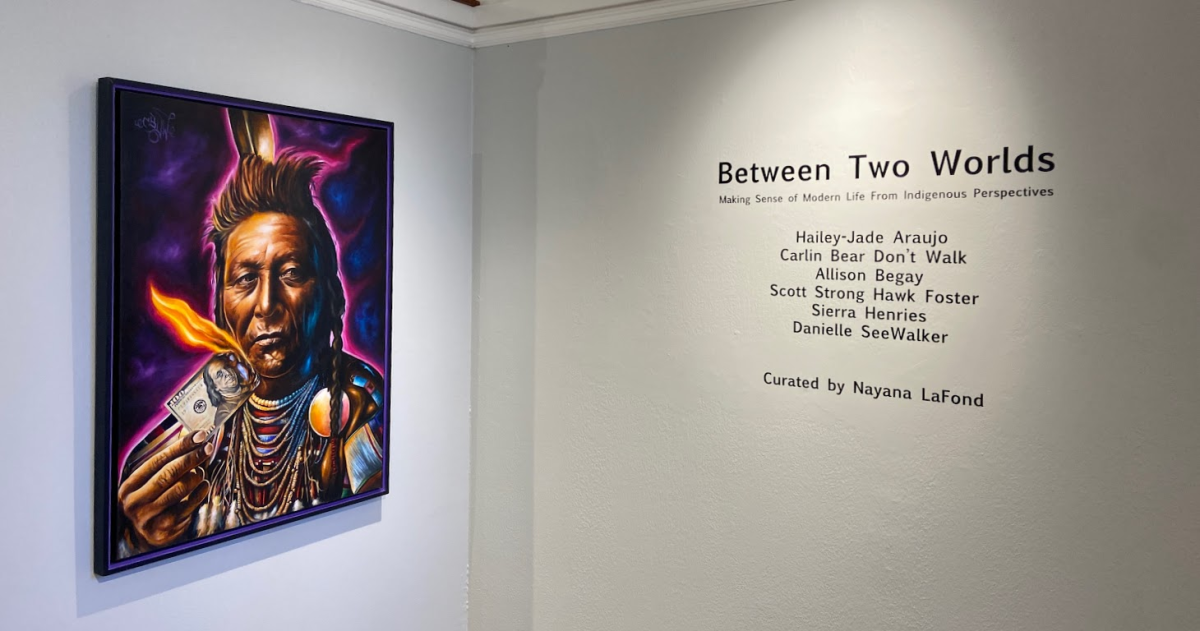
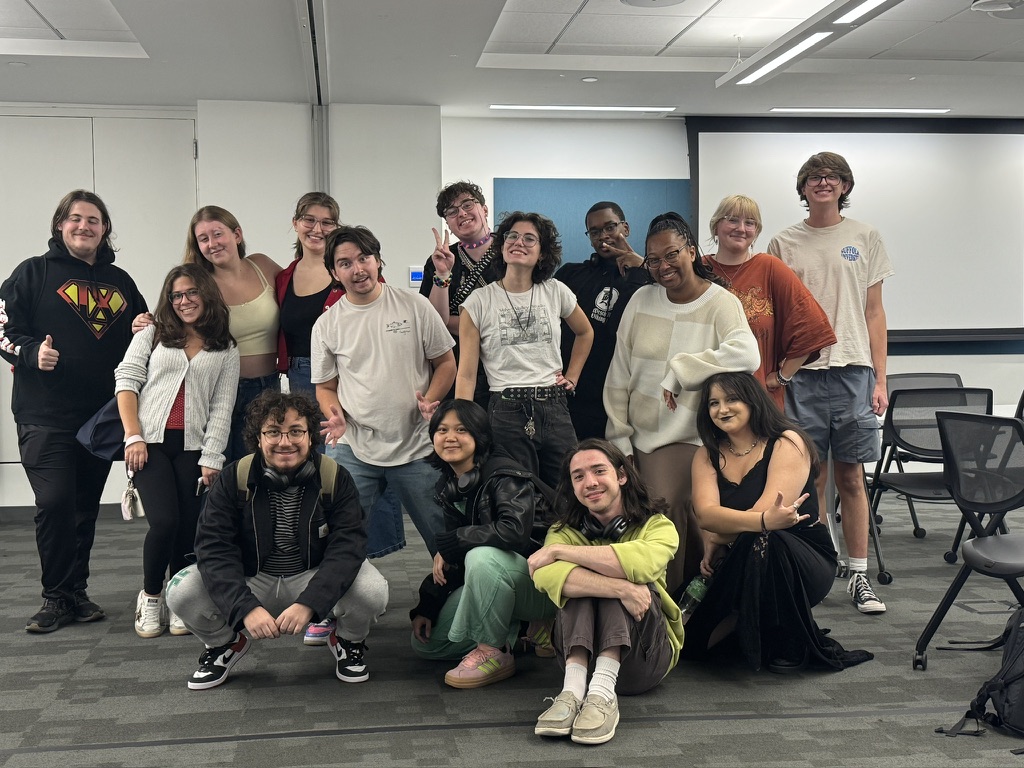

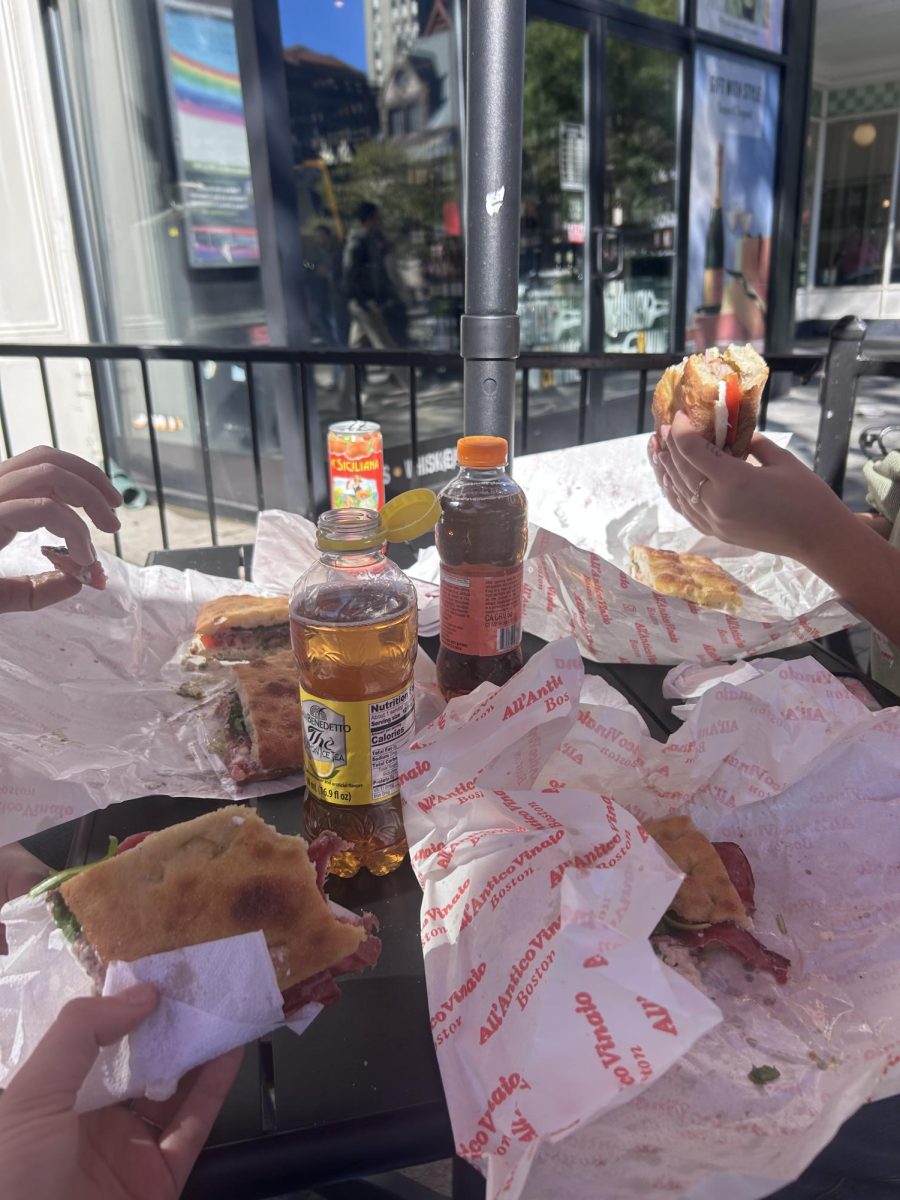


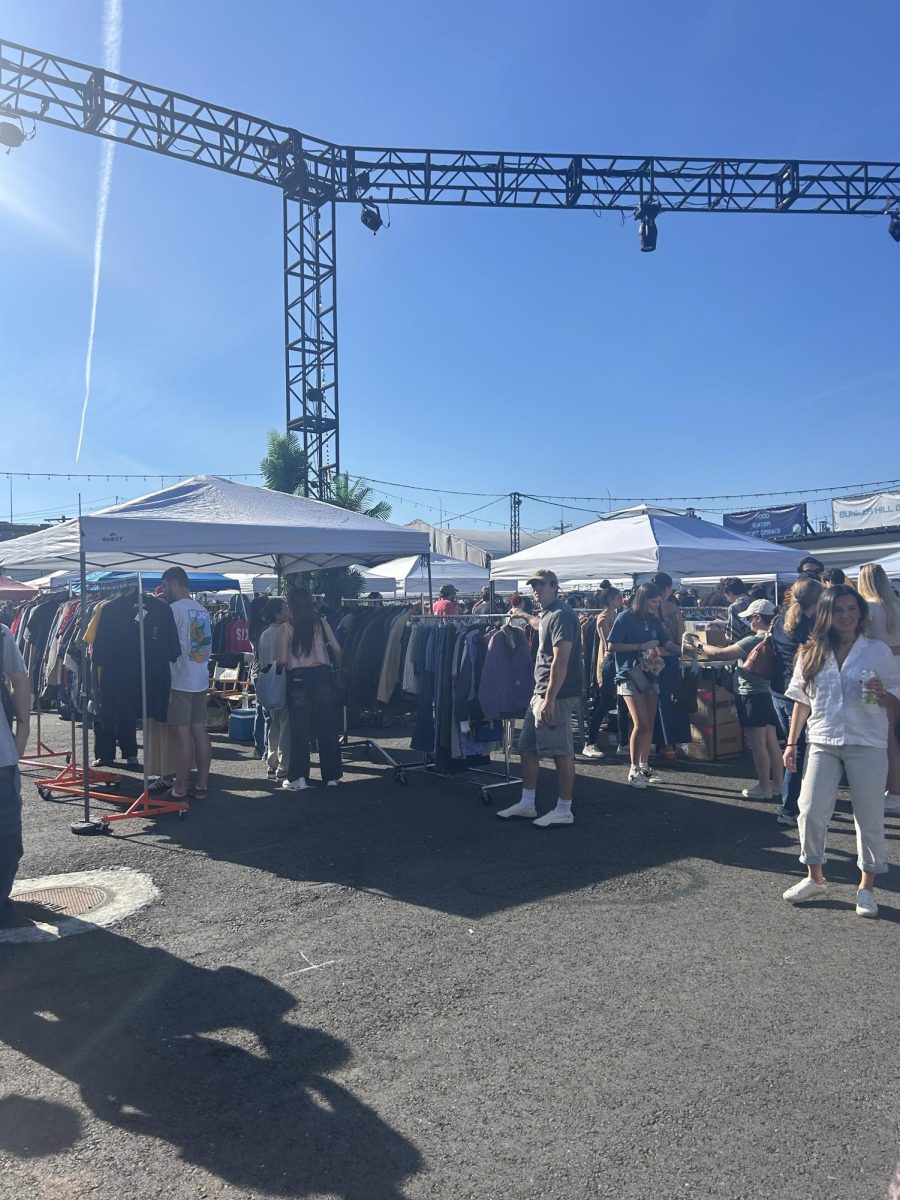





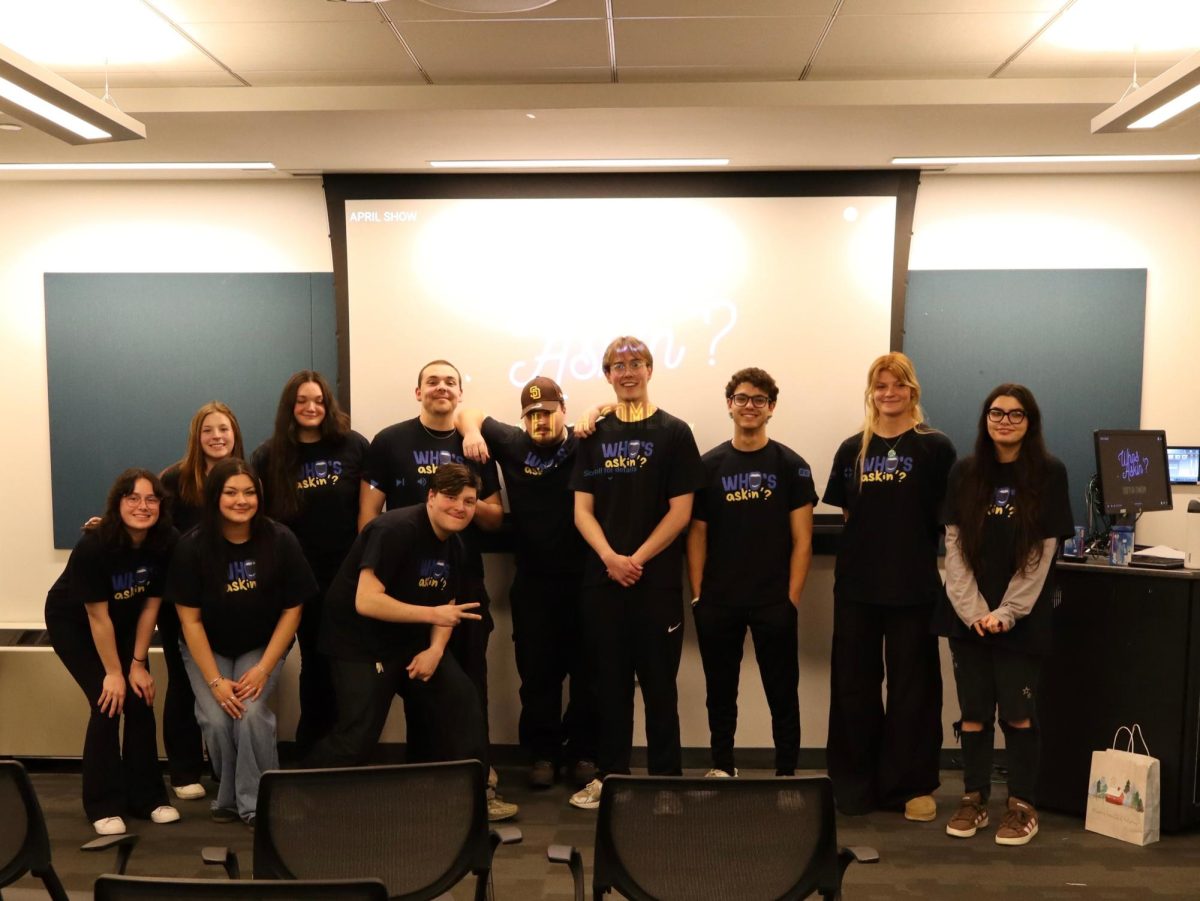
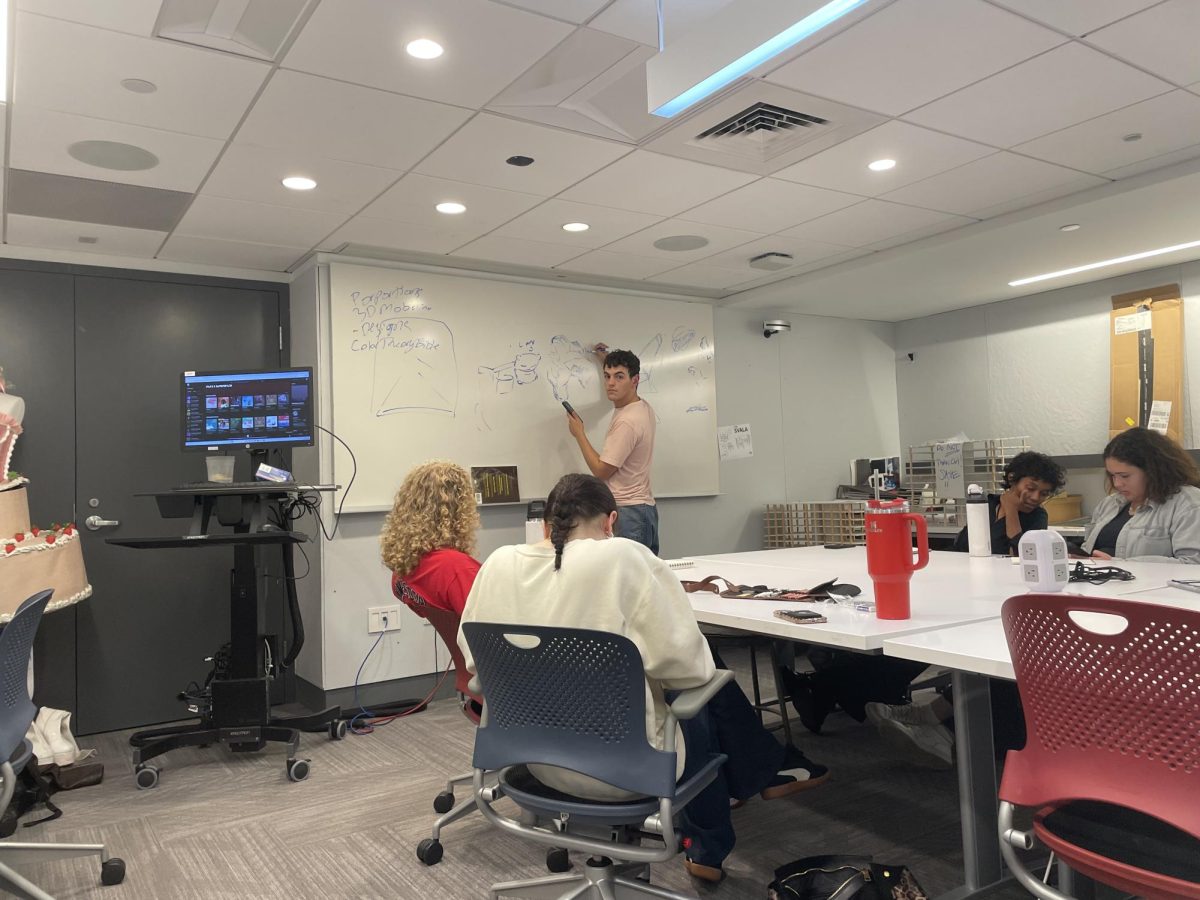

The Suffolk Journal • Jan 25, 2013 at 8:50 am
[ARTS] “Wallpower!” exhibit takes over NESAD gallery (by @allytgurl) http://t.co/aA6l9MdW #art
Suffolk Art & Design • Jan 24, 2013 at 10:34 am
Check out the @SuffolkJournal article about the last Suffolk Art Gallery show at the School of Art & Design http://t.co/bwI5VTV8
Ally Thibault • Jan 23, 2013 at 11:09 pm
@Suffolk_U students- Did you see the latest #art exhibit at @SuffolkNESAD gallery? Read about in the @SuffolkJournal http://t.co/EXLpV4UX